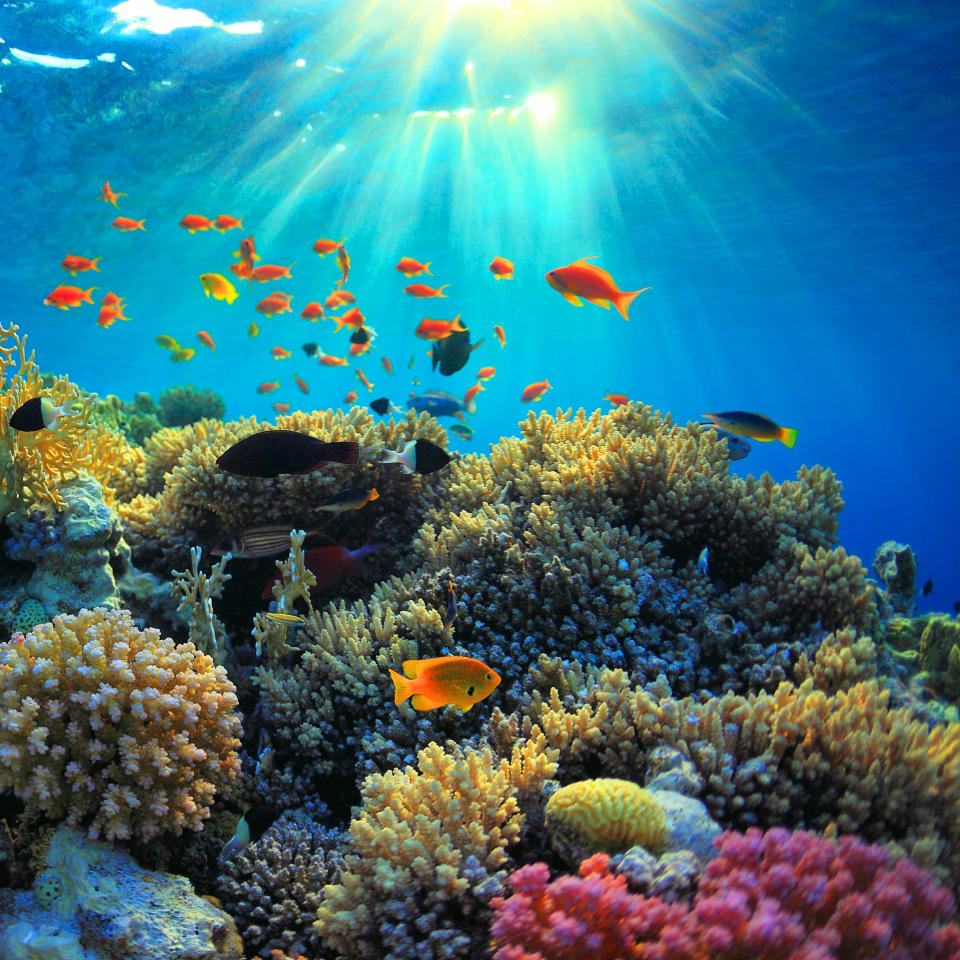There are 12,000-foot-tall Underwater Mountains off California’s Coast-and They Need Your Help
Everyone knows the Himalayas, the Rockies, the Alps-the towering geographical features that take up entire horizons and tower over even the tallest cities. Less known, though, are their underwater counterparts that rise from the ocean floor: the seamounts.
A seamount is, essentially, a mountain under the sea. Often remnants of extinct volcanoes, these underwater mountains can form ranges or stand alone. They rise from the ocean floor and must stand at least 3,280 feet (1,000 meters) above the surrounding seafloor to be classified as a seamount, according to the National Oceanic and Atmospheric Administration. Their submerged peaks do not reach the surface of the water-those that do are classified as islands.
RELATED: Drink These Beers and Save the Planet at the Same Time

These underwater fixtures cover more land than any other single land-based habitat on the planet: About 11 million square miles. Scientists estimate that there are more than 100,000 seamounts in the oceans of the world, with more than 30,000 of them in the Pacific Ocean alone. They can be found in all of Earth’s major ocean basins and are often home to a greater variety of marine species-including rare and endangered species-than the seafloor. Only an estimated one-tenth of a percent (.1 percent) have been explored, but it is already clear to scientists that these seamounts offer critical marine habitats.
For that reason, there are widespread efforts to protect these underwater spots. In 2016, President Obama designated almost 5,000 square miles off the New England coast as a new marine national monument-the first in the Atlantic Ocean-called the Northeast Canyons and Seamounts Marine National Monument. This area of ocean, 130 miles off the southeast coast of Cape Cod, Massachusetts, is home to several species of deep-sea coral, sharks, sea turtles, beaked whales, and more. Its seamounts rise as much as 7,700 feet above the ocean floor, and its new designation means it-and its ecological resources and species-are protected and preserved from commercial fishing and activities like seabed mining.
RELATED: 25 Gorgeous Coastal National Parks
An act that would do the same for the seamounts off the coast of California has been introduced to the House of Representatives. The California Seamounts and Ridges National Marine Conservation Area Designation and Management Act seeks to protect these underwater peaks 45 to 185 miles off the coast as National Marine Conservation Areas. This would protect them from oil drilling, mining, and other industries while protecting recreational and charter boat fishing opportunities and other activities that don’t damage the fragile ecosystem, which is home to 500-year-old corals, deep-water sponges, and endangered sperm whales and sea turtles.
Visit CaliforniaSeamounts.org for more information on efforts to pass this act, championed by Wildcoast, the Surfrider Foundation, and the Marine Conservation Institute with other grassroots supporters. Currently, only one percent of California’s deep-sea habitats are permanently protected, and efforts to protect the state’s seamounts seek to change that before they’re damaged beyond repair.
RELATED: Learn More About the Surfrider Foundation

Called “California’s Deep-Sea Treasures,” the seamounts support fin and blue whales, white abalone, anglerfish, corals and sponges and serve as fueling stations for sperm whales, sea turtles, seabirds, and sharks, and their rich natural areas offer endless opportunities for scientific discovery. To help protect them, head to CaliforniaSeamounts.org to sign a petition in support of the act.
Video: Courtesy of the Surfrider Foundation
Photos: M Swiet Productions/Getty Images (sea turtle); IBorisoff/Getty Images (coral reef)


